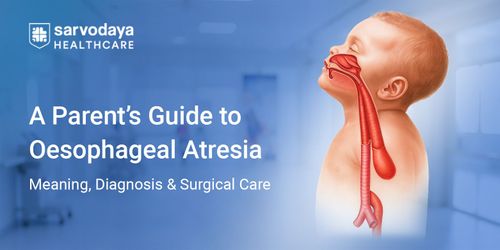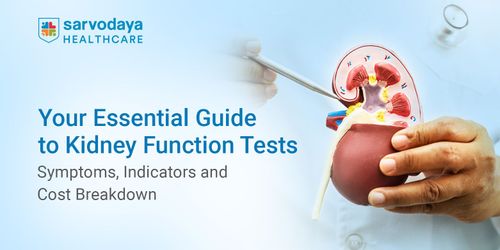Patient safety is one of the most critical foundations of healthcare, ensuring that individuals receive medical treatment without risk of avoidable harm. Every year, 17 September is recognised as World Patient Safety Day, a global event that highlights the importance of building safer systems for both patients and healthcare professionals.
In this blog, we will explore what World Patient Safety Day is, its significance, and how it relates to high-quality patient care services.
Exploring World Patient Safety Day
World Patient Safety Day is observed annually on 17 September and is one of the official global health days led by the World Health Organisation. It was created to raise awareness of patient safety challenges and to encourage action worldwide. The day also unites healthcare workers, policymakers, and patients in a shared commitment to reducing preventable medical errors.
For 2025, the theme is “Safe care for every newborn and every child”, with the slogan “Patient safety from the start!”. This focus underlines the vulnerability of children to unsafe care and highlights the urgent need to strengthen systems that protect them.
Purpose and Significance of World Patient Safety Day
The significance of this day lies in its ability to create global awareness and drive change at every level of the healthcare system.
The key objectives of the day include:
- Promoting public awareness of patient safety challenges.
- Encouraging hospitals and clinics to strengthen patient care services.
- Highlighting the importance of training healthcare staff in safe practices.
- Engaging patients to take an active role in their care journey.
- Building a culture of transparency and trust in healthcare organisations.
World Patient Safety Day 2025 Theme, Slogan, and Motto
Every year, World Patient Safety Day has a specific theme that focuses on a pressing issue in healthcare safety. The theme for 2025 is “Safe care for every newborn and every child”, which draws attention to the need for stronger safeguards in paediatric and neonatal care.
The World Patient Safety Day slogan for 2025 is “Patient safety from the start!”, emphasising the importance of protecting children’s rights from birth.
Key Areas of Patient Safety
Improving safety in healthcare requires focus on several critical areas. Hospitals and medical teams must establish a robust safety culture and ensure that every aspect of the care pathway is designed with patients’ well-being in mind.
Some of the most critical aspects of patient safety include:
- Patient Care Services: Clear protocols for diagnosis and treatment to minimise risks and ensure consistency of care.
- Patient Care in Nursing: Nurses play a vital role in monitoring patients, administering medications accurately and serving as the primary point of contact for identifying and addressing complications.
- Communication: Clear communication between doctors, nurses, patients, and their families is essential to prevent errors.
- Infection Control: Strict hygiene protocols and monitoring to prevent hospital-acquired infections.
- Medication Safety: Accurate prescribing, labelling, and administration of medicines to reduce mistakes.
Role of Technology in Improving Patient Safety
Technology has become an integral part of modern healthcare, helping to minimise risks and improve treatment outcomes. When applied effectively, it enhances patient care services, ensuring that procedures are safer, faster, and more reliable.
Here are some ways technology supports patient safety:
- Electronic Health Records (EHRs): Provide complete, real-time patient data to prevent duplication and ensure accurate treatment.
- Artificial Intelligence (AI): Assists doctors in diagnosing conditions more accurately and predicting risks early.
- Digital Monitoring Systems: Track vital signs and alert staff immediately when intervention is needed.
- Telemedicine: Extends safe medical consultations to remote areas, ensuring patients can access timely care.
- Data Security: Protects sensitive medical information while maintaining confidentiality and ensuring data integrity.
How Hospitals Promote Patient Safety
Hospitals play a central role in ensuring that safe practices are followed in every aspect of patient care.
Some of the most effective hospital strategies to improve patient safety include:
- Training and Education: Continuous learning programmes for doctors, nurses, and support staff on best safety practices.
- Standard Operating Procedures: Strict protocols are in place for surgeries, medication handling, and infection prevention.
- Patient-Centred Care: Actively involving patients in their treatment plans and encouraging them to voice concerns.
- Error Reporting Systems: Encouraging healthcare staff to report mistakes without fear of punishment so that improvements can be made.
- Safety Audits: Regular monitoring and evaluation to ensure compliance with international standards.
How Patients Can Ensure Their Own Safety
While hospitals and medical teams carry the primary responsibility, patients themselves also play a vital role in strengthening patient safety. When patients take an active approach, they not only safeguard themselves but also support healthcare providers in delivering better outcomes.
Some necessary steps include:
- Asking Questions: Clarifying treatment options, risks, and medication details with doctors and nurses.
- Keeping Records: Maintaining personal health information to avoid duplication or missed details.
- Following Instructions: Adhering to prescriptions and after-care advice to ensure proper recovery.
- Speaking Up: Alerting staff immediately if something feels unusual or if an error is suspected.
- Practising Hygiene: Following recommended practices to avoid infections, especially after discharge.
Conclusion
World Patient Safety Day serves as a powerful reminder that safe healthcare is not optional but essential. By focusing on the prevention of avoidable harm, improving communication, and empowering both patients and providers, it creates a culture of care where every individual’s well-being is prioritised.
At Sarvodaya Hospital, Faridabad, and Greater Noida West, patient safety is at the heart of every service we provide. From advanced treatment facilities to a highly skilled team of doctors and nurses, the patient care hospital ensures that each patient receives the highest standards of care. A preventive consultation at Sarvodaya can help identify risks early, guide patients towards the right treatment options, and provide long-term support for maintaining health and safety.
As we observe World Patient Safety Day 2025, let us recognise that safety is a shared responsibility. By working together – patients, healthcare professionals, and hospitals – we can ensure that every child, adult, and elderly individual receives care that is not only effective but also safe and dignified.

















